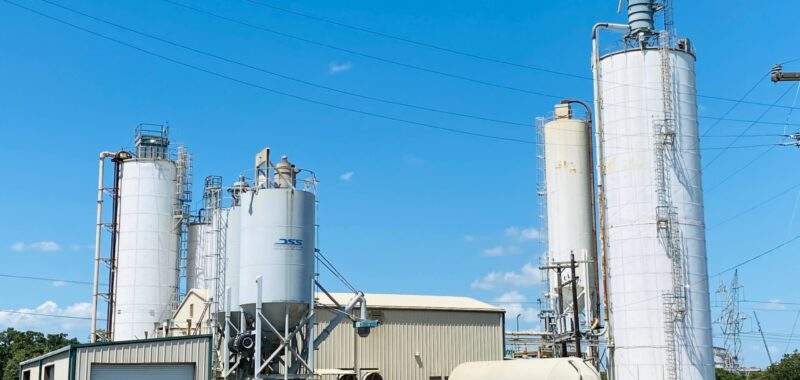Summer road work is underway across the U.S. Today, the smell of asphalt wafts in the air as the sounds of poured cement ring loudly at intersections and highways from coast to coast. Of the 2.8 million miles of paved roadways in the U.S., around 94 percent are surfaced with asphalt, according to the Department of Transportation Federal Highway Administration.
Eco Material Technologies, a company out of Utah, is driving forward a new material for the ground beneath our vehicles: a low-carbon eco concrete that can be used in a variety of contexts. Eco Material products have already surfaced at a number of highways across Texas—the I-69 Interchange project in Hidalgo County, the I-35 project in Travis County, and parts of I-45, to name just a few.
Eco Material Technologies’s PozzoSlag uses fly ash—a byproduct of coal combustion—in addition to other natural mineral pozzolans and manmade pozzolans. Similar to the Romans, the secret ingredients to such a long-lasting, strong cement is a mix of volcanic ash, along with lime clasts.
The ash used in Eco’s green cement is located at about 1,000 sites across the U.S., the company explained to AN. The company added that it estimates approximately two billion tons of ash are available, meaning it is “set to supply material for its green cement products long into the future.”
When faced with corrosive compounds such as road salt or chlorides, compared to traditional portland cement, Eco green cement performs quite well. A low porosity and low permeability keeps the material solid; in the long, long-term this reduces shrinkage cracks. Less need for water and the “spherical shape” of fly ash also factor into the material’s ease-of-use, as do shorter set times and a faster rate of cement hydration and pozzolanic reactions.
Eco Material’s expanded manufacturing plant in Jewett, Texas, increases the output of PozzoSlag low-carbon cement to approximately 165,000 tons per year, a jump from it previous rate of 84,000 tons per year.
Eco Material Technologies has set up its manufacturing plants and contributed to projects close by to where ash and natural pozzolans can be harvested. In this way, the company is further reducing its carbon impact: Transport distance is kept to a minimum through local projects and the company uses “ optimization technology” to calculate the most-efficient transit mode to the job site. A manufacturing process that does away with an energy-intensive kiln also keeps carbon emissions to an absolute minimum.
Beyond highway construction work, Eco Material Technologies has identified other uses for its wonder-cement that addresses another country-wide crisis: housing.
Eco Materials Technologies manufactured PozzCem Vite®, a 3D-printed concrete being used to construct houses in Round Top, Texas, southeast of Austin. According to the company the manufacturing of the 3D-printed concrete, compared to that of portland cement, has 90 percent lower carbon emissions. And like PozzoSlag, its speedy set times and optimal strength make it an ideal building material.

